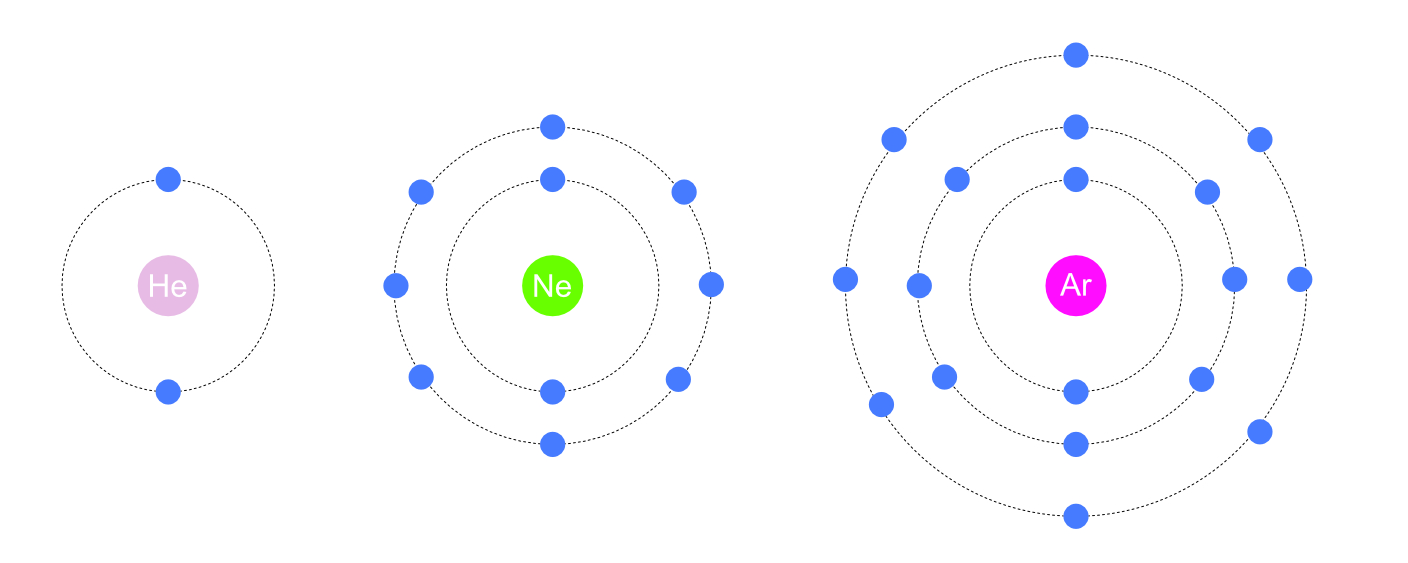Nobel Gases
Electron Structures
All of the noble gases have a full outer orbit of electrons. For the majority, this means eight, but as helium only has a single orbit it is complete with just two electrons. These full outer orbits make the elements chemically unreactive or inert.
Chemical Properties
All these elements have full out electrons orbits, this means that they do not react. They are described as being inert. Other elements undergo reactions in order to fill their outer orbits, they do this by forming ionic or covalent bonds. The noble gases have no need to do this as they have complete orbits already.
This lack of reactivity can be used to prevent unwanted reactions taking place. They can be used in fire extinguishing systems where water can not be used. Large server rooms that run cloud storage facilities, for example, use argon. In the event of a fire, the server room is flooded with argon to push out any oxygen and prevent a fire. The argon does not harm the computers.
Physical Properties
The noble gases make up group 0 of the periodic table, this is also labelled group 8 in some versions of the table.__ All the elements in this group have full outer electron orbits__. This makes these elements very unreactive and they are known as the noble gases or the inert gases.
Properties
- Non-metal elements
- All gases at room temperature
- Density increases moving down the group
- Mass increases moving down the group
- Boiling points increase moving down the table

